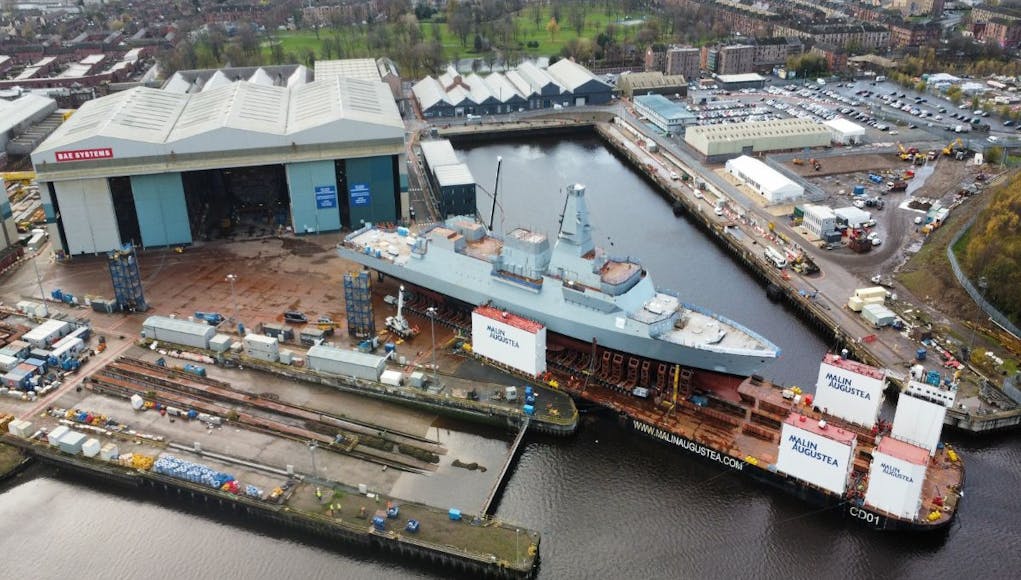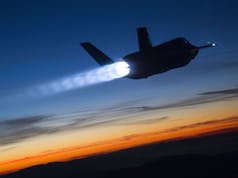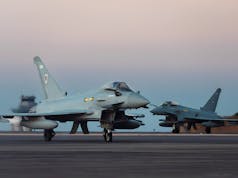The UK Defence Journal takes pride in our commitment to transparency and adherence to the highest standards of safety and legality in all its operations, especially when it involves unmanned aerial systems (UAS).
In adherence to the UK’s civil aviation guidelines, the UK Defence Journal makes sure that our drone flights abide by the legal guidelines.
While our team committed to offering insights into the nation’s defence landscape, it is bound to follow the National Security Act 2023, ensuring that our work does not compromise national security. Alongside this, an emphasis is placed on public and infrastructure safety through a set of comprehensive measures, including risk assessments, flight protocols, technical proficiency, and public awareness.
In short, you’re likely to see George wearing a big, bright jacket saying ‘Drone in Use’ after he’s let the appropriate people know about the drone flight.
Following CAP 722 Guidelines
CAP 722 – Unmanned Aircraft System Operations in UK Airspace, offers explicit guidance for drone operations.
Here’s how we align with CAP 722:
- Operator Proficiency: Our drone pilot undergoes rigorous training and possesses the required certification, ensuring they’re proficient and well-versed with CAP 722 guidelines.
- Operational Limits: Despite our drone being sub 250g, which brings certain flexibilities, we strictly adhere to operational limits ensuring we neither fly in adverse weather nor outside stipulated timings.
- Permissions: In scenarios where permissions are required, be it from landowners or other authorities, the UKDJ always ensures necessary approvals are in place before the drone takes off.
A Delicate Balance of Journalism and National Security
The UK Defence Journal remains devoted to transparently providing our readers with comprehensive insight into the nation’s defence landscape.
In fact, our team has a good working relationship with Counter Terrorism police, helping to inform of any unusual goings on whilst undertaking drone flights, with George (the editor) having met with an office on this very topic only recently.
Recognising the significance of the National Security Act 2023, we’ve instituted stringent measures that ensure our drone operations around shipyards strictly adhere to the Act’s provisions:
- Prohibition on Disclosing Protected Information: We never obtain, copy, record, retain, or disclose any protected information as defined by Section 1(2). Our drone footage focuses solely on areas visible to the public, ensuring we don’t inadvertently access information that might be restricted for the UK’s safety or interests (Section 1(1) & (2)).
- No Assistance to Foreign Intelligence Services: Our operations are purely journalistic in nature. We don’t engage in any activity that may assist foreign intelligence services, either directly or indirectly, as outlined in Section 3(1) & (2). Our journalistic ethos is founded on integrity and a commitment to the safety and interests of the UK.
- Steering Clear of Prohibited Places: We adhere strictly to the definitions provided in Section 7, ensuring that our drones never access, enter, inspect, pass over or under, or approach prohibited places as identified in Sections 4(1) & 5(1). Our drones maintain a distance and utilise zoom capabilities, ensuring that we don’t infringe upon areas designated for UK defence purposes, as described in Section 7(1) and (2).
- Transparency with BAE: BAE Systems is fully aware of our team and our operations. We never act in a manner that could be perceived as prejudicial to the UK’s interests (Sections 1(1)(b) & 4(1)(b)).
- Review Before Publication: Every piece of footage is meticulously reviewed before publication to guarantee that no aspect of it could be misconstrued as assisting a foreign intelligence service or providing access to protected or prohibited information (Sections 1, 3 & 4).
- Education and Training: Our team receives ongoing training to stay abreast of all defence-related legal regulations. This includes a deep understanding of the National Security Act 2023, ensuring our operations align with its requirements.
Safety Protocols to Preclude Reckless Endangerment
Whilst the primary focus of our operations centres around national security adherence, the safety of the public and infrastructure remains paramount. The UK Defence Journal is profoundly aware of the concerns associated with drone operations and has instituted comprehensive measures to address them:
- Risk Assessments: Before any flight, our team carries out an exhaustive risk assessment. This evaluates environmental conditions, identifies potential obstacles, and delineates emergency protocols.
- Flight Paths & Altitudes: Our drone pilot operates drones in a manner that adheres strictly to predetermined flight paths and maintains altitudes that are clear of obstructions or heavily populated areas, conforming to guidelines set by the Civil Aviation Authority.
- Technical Proficiency: Every drone operator within our team is not only certified but also undergoes consistent and rigorous training sessions. They’re well-versed in the intricacies of drone flight and are equipped to handle unexpected situations.
- Equipment Check: Every drone in our fleet undergoes routine maintenance and is subject to meticulous pre-flight checks, ensuring optimal condition and substantially reducing the potential for technical hitches.
- Geo-fencing Technology: To further bolster our safety measures, our drones employ geo-fencing technology, ensuring they function within designated zones, avoiding any inadvertent entry into restricted or congested areas.
- Public Awareness: In instances where our drone operations are near public areas, we make it a point to inform local communities about the nature and timing of these flights. This approach not only promotes transparency but also empowers individuals to make informed decisions.
- Emergency Protocols: Should there be an unexpected glitch, our drones come equipped with a range of fail-safes, including return-to-home features and secure landing measures, which can be promptly initiated to mitigate risks.
- Insurance: It’s worth noting that every drone flight we undertake is underpinned by a robust insurance policy, which reflects our unwavering commitment to addressing any unforeseen incidents with the highest degree of responsibility.
- Privacy & Discretion: Respecting personal spaces is a cornerstone of our operations. We’re committed to ensuring our drones never inadvertently encroach upon private areas or inadvertently film individuals.
In light of these rigorous safety protocols, our drone flights are orchestrated with the utmost diligence and foresight, ensuring they stand far removed from any notion of reckless endangerment to either the public or property.














The aerial pictures published in this journal don’t contravene national security , warships at this of stage of construction and sitting outside can be photographed by anyone from across the river. It’s the ships internals that are of interest to other parties and that would need internal access.
Ah…the hoops the Ukranians have to go through before filming Russian tanks…
AA
Why the need for justification? If you are confident nothing illegal or risky is going on fine. It shows me one thing ( I do not agree with civilian use of these bloody things anyway ) It shows me the damage that could be done to any defence/industrial or civilian infrastructure with one. Go on, bite me, l stand by my words 😉
People search for the answer to this on Google, and I want them to click on our articles. Plus, it’s handy to have something to send to people, thanks to Tom.
Yes it is. There are strict rules in place that everyone must follow when operating drones. George Allison always follows them, by the book. His journalism is becoming highly regarded and respected. I personally have been using UK Defence Journal as one of my ‘go to’ resources for factual information on what is happening with our Armed Forces, the Royal Navy in particular. Keep up the good work George!!!
Interesting obviously you are on about drones weighing more than 249 grams as sub 249 g drones come under different rules from the CCA ( civil aviation authority) if there isn’t a fly zone set according to the law a sub 249 g drones can fly within safety parameters and line of sight. Standard no fly zones being airports and prison’s.
No, the above applies to all drones.
Feel sure rules changed towards end of 2023, sub 249 g drones are subject to same restrictions as over 249g drones .
Plus air space above private land is restricted unless permission given?
Hi Gordon, thankfully your comment is entirely inaccurate.
Sub 249g drones have different restrictions from those over 249g, not sure where you think they are the same?
Airspace is not owned by the land owner (or anyone) it is controlled by The CAA and unless its restricted you can fly in/over it regardless what is on the land.
If you are on their land flying then thats something completley different.
Has long as you stay by the rules George it will be fine 👍
Is Govan a hired facility, not just a shipyard? What makes it a naval shipyard? Britain’s
(and the World) greatest shipyard of the first half of the twentieth century, the High Walker Naval Yard, was not just a warship building yard. Naval shipyards were Portsmouth, Devonport, Chatham etc.
Interestingly based on the height of the ship in the dock and the shed (confined online) there is a distinct chance you are above 120m and therefore violating the rules.
Luckily, I’m not though, eh?
Complete rubbish the shed is not 120m ! Having flown here just last week the shed cant be anymore higher than 25..30m at a push!
Good to know.
Naval ship yards are different from ship builders, however if there isnt any restrictions you are free to fly…
I was assaulted whilst legally flying over a warship last year, I was subsequently charged because not all of Police Scotland understand where, what, when and why it is safe to.
For Police Scotland its all about reaching their targets without doing any research first
Even, when you do fly legally and have everything else in place, there is still those that take offence and say you cannot do it.. much to my personal experience.
I was attacked by a group of French Marines whilst legally flying over a French warship last year.
The police got involved and it was proven that they had no clue they also need to learn and read up on the drone laws.